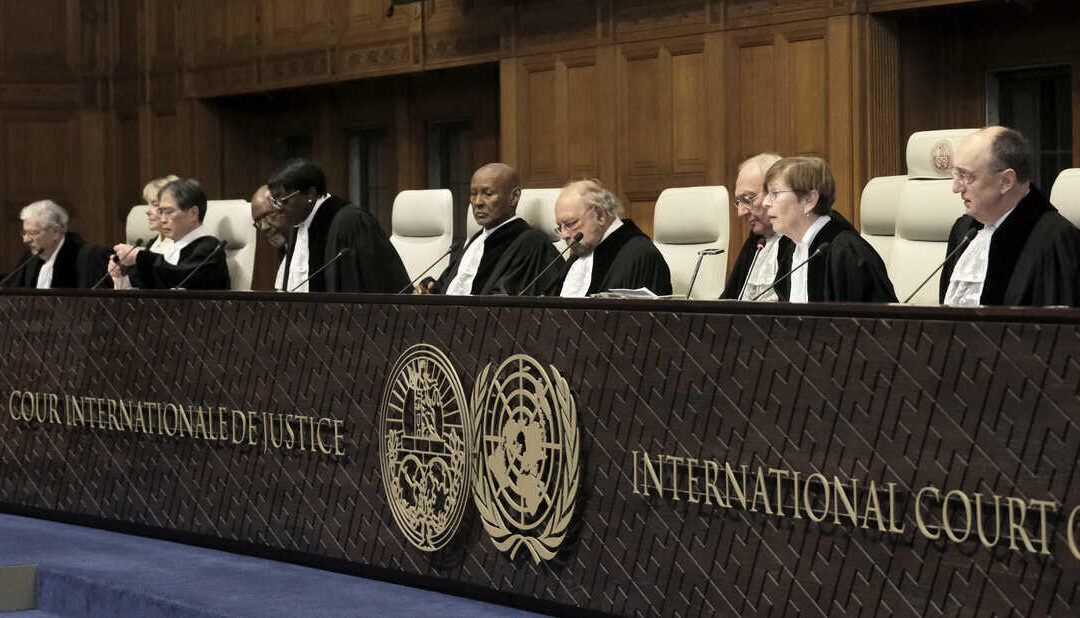Women and men, old and young, black, brown, and white, pleaded with the Court to issue emergency orders, including an order to immediately cease fire. They detailed the suffering in Gaza and Israel, and they warned that the “very reputation of international law” hangs in the balance.
The last time the world confronted such a clear warning about the future of international law occurred as World War II was ending. The new Realist school of political science was emerging. Its chief architect, an international law scholar and German Jewish refugee named Hans Morgenthau, began to teach that states—the United States, in particular—must put its faith in military force to keep the nation secure, not the ancient legal principles prohibiting force or the means of peaceful resolution of disputes. Sir Hersch Lauterpacht, another Central European Jew, responded in a way that helped ensure the law and institutions established for peace in the wake of world war would prevail against the Realists. But they persisted. When the Cold War ended, Realists were joined by Liberals oriented to national civil and political rights. They expanded Realism’s belief in war for national security to war for human rights, arms control, counter-terrorism, the imposition of friendly governments, and the seizing of territory under dubious historical claims. If international law prohibits the use of force for these purposes, Liberal interventionists argued the law can and should be disregarded.
Older, proven teaching was pushed out of universities and government legal offices. Required courses in international law were dropped from international relations and peace and conflict studies programs. Law schools offered courses in human rights but not general international law. Bailliet and her co-author have written that by the last quarter of the 20th century, international law scholars had “largely abandoned promoting the establishment of peace as an independent, overarching aim of international law…” In 2022, the Yale legal historian Samuel Moyn released his book, Humane, which carries the subtitle, How the United States Abandoned Peace and Reinvented War. These developments meant policy makers and academics lost basic knowledge of how to solve acute social challenges without using military means. Israel’s Gaza war, Sudan’s civil war, and Russia’s Ukraine war are all evidence of failure to respect the law’s substance and processes for peacefully settling disputes. When Lauterpacht defended international law in 1946, he was speaking from his deep understanding of human nature and his experience of losing most of his family to the Nazi Holocaust. He taught that international law must be “functionally oriented towards both the establishment of peace between nations and the protection of fundamental human rights” (1946, p. 51). Today he would surely add the protection of the natural environment, which is so deeply ravaged by armed conflict and the shift of resources to fueling war machines.
South Africa has taken up Lauterpacht’s insights. Its case at the ICJ educates the world in the importance of the law of peace once again. South Africa underscores in its oral and written arguments that resort to force is prohibited under ancient law found in all cultures and codified in the United Nations Charter. The UN was founded to “save succeeding generations from the scourge of war.” It does so by requiring in Article 1 that states comply with international law, in particular, the prohibition on force codified in Article 2(4). The Charter’s only limits on the prohibition are for UN Security Council authorization (Articles 39-42) and in self-defense when a state responds to an armed attack occurring, launched by another sovereign state. (Article 51). Even then, the defending state may only respond if necessary to halt and repel the attack in a way not disproportionate to the injury. When a lawful basis for resort to force exists, it must respect the equally ancient principles on the lawful conduct of force, including civilian immunity, necessity, proportionality, and humanity. This law, too, is codified in treaties, including the Geneva Conventions and the Genocide Convention.
As this brief review indicates, the right to resort to war is severely restricted. This fact may seem counterintuitive to a generation surrounded by ideas and culture extolling war. “We have a right to defend ourselves” is a constant refrain, and it means today resort to major armed force. In fact, the Charter’s peaceful means of settling disputes at the international level hold the true promise of human flourishing: Articles 2(3) and 33 mandate the use of non-violent mechanisms—negotiation, mediation, inquiry, conciliation, arbitration, and courts. Law enforcement measures are always lawful. South Africa is not only correctly arguing the law against the use of force, it is modeling the use of courts for peaceful settlement. Some ICJ judges are still captives of Realism. Others, thankfully, are not—their views, together with South Africa’s, will catalyze the recovery of international law for peace. They will help us to see war as Pope Francis sees it, a “crime against humanity.”
Download a PDF of this issue »
Written by Mary Ellen O’Connell, the Robert and Marion Short Professor of Law and concurrent professor of international peace studies at the University of Notre Dame.





